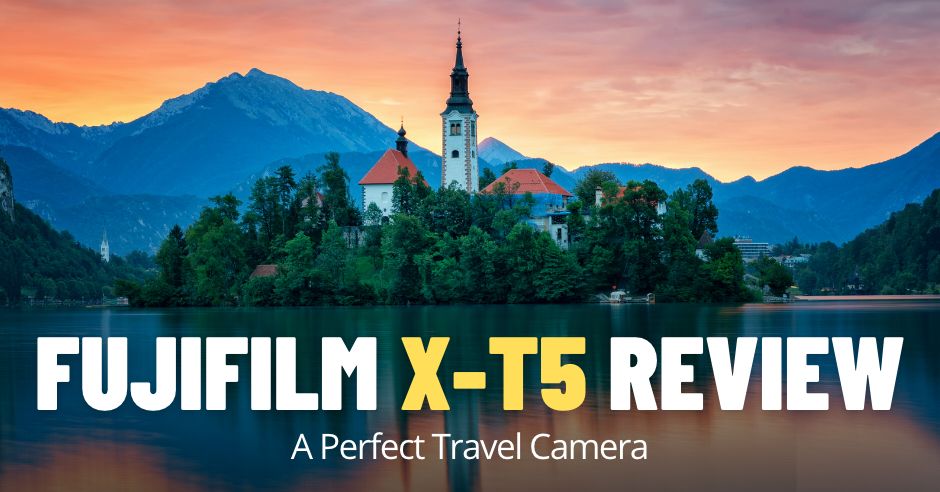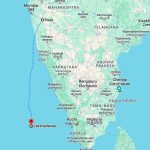In Search of a Good Journey Digital camera • PhotoTraces
The Fujifilm X-T5 evaluation is my try to provide you suggestions after taking pictures with the digital camera for five months.
It isn’t a technical evaluation however relatively a private expertise of how the X-T5 mannequin affected my images.
The X-T5 is a stepping stone in my seek for an ideal digital camera for my journey images. All of us perceive there isn’t a such factor as a “good digital camera,” however the X-T5 is getting shut for a kind of images I do. It took me 15 years, 3 digital camera manufacturers, and a dozen digital camera fashions to get to the purpose the place I don’t have main annoyances in my digital camera.
I switched from Sony to Fujifilm 5 years in the past, getting an X-T2 mannequin. I put collectively an in depth article outlining my reasoning for the switching and my first impressions of Fujifilm X-T2 particularly and the Fujifilm ecosystem normally. Fujifilm vs Sony grew to become one of the vital in style articles on my web site, and even immediately, it attracts a number of consideration.
X-T2 was and nonetheless is a really succesful digital digital camera however as with all digital camera, it had some shortcomings. And with the X-T5, Fujifilm addressed nearly all of them.
Please be aware I upgraded to X-T5 from X-T2, and though I’ve expertise taking pictures with X-T3 and E-X3, in my Fuji X-T5 evaluation, I primarily evaluate it to the digital camera I used essentially the most, X-T2.
Design and Ergonomics
Fujifilm X-T2’s distinctive retro design was one of many causes I embraced the X-T sequence 5 years in the past. It provided guide controls, compact measurement, and unprecedented energy over customizations. It checked a lot of the containers for my journey images.
I favored X-T2 a lot that it prevented me from upgrading to the Fuji X-T4 mannequin. Over two generations, the X-T sequence grew to become bulkier and heavier, beginning to resemble full-frame fashions. I used to be not too excited concerning the course the Fuji X-T line was progressing.
In 2020 after I determined to not go for X-T4, I even entertained the concept of searching for my subsequent digital camera from one other model.
I assume I used to be not the one one who voiced dissatisfaction, and Fujifilm observed it and corrected its course.
And after I realized that Fujifilm determined to go to the unique roots with the X-T5, I knew instantly that I might stick with Fujifilm.
The Fujifilm X-T5 is akin to the scale of X-T2. However they made it a bit deeper to accommodate IBIS and an even bigger battery. Based on the specs, it’s only 50 grams heavier, even with the a lot larger battery. It additionally has a barely extra pronounced grip.
I’ve no complaints concerning the ergonomics, however X-T5 feels completely different in my hand. I assume 5 years of muscle reminiscences would let me discover even a tiny change.
AF ON and AEL Buttons
One other small change in physique design that positively impacted my images was the redesign and repositioning of AF-L and AF-L buttons. I perceive that the buttons had been redesigned and repositioned already on X-T4, however since I skipped it, it’s a new expertise for me.
Let me clarify.
I take advantage of the Again Button Focus and Auto Publicity Lock with just about each shot I take.
First, I level the digital camera towards the scene I intend to seize and lock the publicity by urgent the AEL button. Subsequent, I activate the histogram contained in the EVF by urgent the button in entrance of the digital camera and use the publicity compensation to regulate the publicity, making it as vibrant as doable with out clipping the highlights. The approach additionally is named ETTR (publicity to the proper).
When I’m accomplished with the publicity, I care for focus. I used the hyperfocal distance focusing approach to maximise the depth of discipline of my panorama photographs. I level the one focus level at hyperfocal distance and press AF-L (AF ON on X-T5) to lock the main focus.
Within the remaining step, I recompose and press the shutter.
It would sound very cumbersome, nevertheless it takes me solely just a little time with apply. Nevertheless it permits me to take correctly uncovered and sharp photographs with 99% accuracy.
On X-T2, the buttons are tiny. Plus, the AF-L button is positioned in such an ungainly place that I by no means used it. I needed to program the Rear Command Dial to lock the concentrate on the press and use it as an alternative of the AF-L button.
On X-T5, the AF On and AEL buttons are extra distinguished, tactile, and positioned in the proper locations to make use of when wanting by means of the EVF.
Again to the Future with LCD
A very long time in the past, when taking pictures with Canon, I spotted that I not solely haven’t any use for articulated screens but additionally despise them. As you may think about that I’m delighted that X-T5 went again to the outdated and confirmed 3-way tilt rear display screen design.
To summarize, there are not any dramatic adjustments in design and ergonomics in X-T5, however all of them are welcome. I couldn’t spot any negatives up to now.
Picture High quality
Once I discovered that Fujifilm X-T5 can be outfitted with a 40MP sensor, I used to be initially very skeptical.
After taking pictures for thus lengthy with APS-C cameras, I used to be satisfied that 24-26MP sensors had been a candy spot for crop sensor cameras. A better megapixel depend wouldn’t profit however would possibly even jeopardize picture high quality.
My concern was that tiny pixels of the 40MP sensor would negatively impression the dynamic vary and enhance the noise stage by means of your complete ISO vary.
Plus, I used to be not too excited to cope with larger RAW recordsdata.
However as soon as once more, Fujifilm proved me flawed. The brand new X-T5 40MP sensor is a big leap ahead in comparison with older 24MP and 26MP Fujifilm sensors.
Sharpness and Particulars
I switched from Sony to Fuji primarily due to the unprecedented picture high quality and the excessive stage of element that Fujifilm X-Trans sensors produce. I used to be shocked that photographs taken with X-T2 had been sharp and even usable at 100% magnification.
Since I didn’t count on a lot from the brand new 40MP sensor, I hoped to get a minimum of the identical stage of picture high quality akin to X-T2. To my shock, the brand new X-T5 sensor exceeded all my expectations.
The brand new sensor produces a lot cleaner, sharper photographs with distinctive ranges of element. The RAW photographs taken at ISO 125 are usable even at 200% magnification.
It’s unbelievable.
I really like the brand new 40MP X-Trans sensor.
Unprocessed RAW picture. The picture is overexposed. I used the approach Publicity to the RIght (ETTR)
100% crop
200% crop
Processed picture
Dynamic Vary
I can not precisely measure the brand new sensor’s true dynamic vary, however what I’ve is expertise coping with digital photographs as an expert graphic designer and photographer. Plus, I course of RAW photographs each day.
Based mostly on my remark, the dynamic vary of the X-T5 sensor is on par with the X-T2 when taking pictures at ISO 200 and up. However X-T5 produces a wider dynamic vary when taking pictures at a base ISO of 125. Since X-T2 has no native ISO decrease than 200, it’s most likely not a good comparability.
But when I needed to summarize, the X-T5 produces a wider dynamic vary on the base ISO.
And since most of my photographs are taken at base ISO, it’s a large constructive for my images.
New RAW Compression Possibility
Fuji X-T2 has two RAW compression choices: Uncompressed and Lossless Compressed. The Uncompressed file measurement is round 50MB; add Lossless Compressed is about 28MB.
After analyzing each variations, I couldn’t see the distinction in high quality, even at 800% magnification. I didn’t see the rationale to make use of uncompressed RAWs, and for five years, I’ve been taking pictures with the Lossless Compressed choice.
Now, Fujifilm added one other compressed choice. Subsequent to the Uncompressed and Lossless Compressed, now we have a Compressed choice.
The brand new compressed choice produces the next file sizes:
Uncompressed – 87MB
Lossless Compressed – round 45MB
Compressed – round 29MB
As earlier than, I’m sticking to the Lossless Compressed choice. However I might not hesitate to make use of the Compressed choice if I’m pressed on house on the reminiscence card as a result of it nonetheless produces excellent RAW photographs.
The picture was taken with the brand new compression choice, Compresse. RAW file measurement is 28MB.
Noise and Low Mild Efficiency
Since I take most photographs at base ISO, low mild efficiency is just not essential for my images. Most of my high-ISO photographs are household photographs.
However what I can say about low mild efficiency primarily based on my observations is it’s on par with my outdated X-T2.
However the stage of digital noise is completely different.
Throughout your complete ISO vary, X-T5 produces a lot much less digital noise. Generally, the RAW photographs taken with X-T5 are cleaner.
It’s particularly noticeable at decrease ISO.
When you might have underexposed areas within the shadows and attempt to get better them in Lightroom, you get some stage of digital noise, even at base ISO. The X-T5 is completely different. You get little or no nostril at decrease ISO (125-400) even after aggressive shadow restoration.
While you shoot at excessive ISO (1600-3200) you may see picture degradation however with a a lot decrease digital noise stage. And whenever you mix X-T5 excessive ISO photographs with AI Denoise noise discount in Lightroom, you find yourself with extraordinarily clear and sharp photographs with a excessive stage of element.
My conclusion is new X-T5 sensor handles digital noise in a different way in a really constructive method.
Excessive dynamic vary picture with extraordinarily underexposed shadows.
100% crop of the recovered shadow space. It has no digital noise.
IBIS (In Physique Picture Stabilization)
IBIS is one other facet of images I alter my opinion drastically about.
Previously, I took most of my journey photographs utilizing tripods. And I didn’t really feel the necessity for IBIS in my images. My place was that IBIS makes the digital camera bulkier, costlier, and fewer dependable, with minimal advantages for my type of images.
What modified my thoughts was the effectiveness of Fujifilm lens stabilization. I spotted that my 2 most important lenses (Fuji 10-24mm and 18-135mm) allowed me to take sharp photographs at a a lot decrease shutter pace.
To alter my outdated habits, I deliberately began leaving my tripods at dwelling, attempting to study to take higher handheld photographs. The entire expertise liberated me, permitting me to be extra artistic with the composition. I didn’t have to hold a full-size tripod in every single place, particularly throughout lengthy and demanding hikes.
Now with the X-T5, I can take my handheld journey even additional due to the effectiveness of its IBIS. I don’t assume it’s efficient as much as 7 stops, as Fujifilm claims, but when I needed to estimate, it’s rock stable as much as a minimum of 5.
When taking pictures with X-T2, I extensively used the Auto ISO function, attempting to not go beneath 1/80s of shutter pace with my dealt with panorama photographs.
Now taking pictures with X-T5, I hardly use Auto ISO in any respect. I set my ISO dial to 125 and really feel comfy taking pictures at broad angles as much as 1/6s. It’s liberating.
I plan to proceed lowering tripod use and focus on handheld methods. I spotted that if I wish to blur water in my landscapes, it’s simpler and sooner to take two photographs at completely different shutter speeds handheld and mix them in Photoshop later than establishing the tripod.
To summarize, the IBIS (in-body picture stabilization) in X-T5 is horrifying efficient and not a ineffective function for my images.
Montreal after the ice storm of 2023.
Battery Life
For me, the most important shortcoming of switching to mirrorless programs was poor battery life. X-T2 was not an exception. Over time, I’ve discovered many tips for extending the battery life in my mirrorless cameras and remembering to cost and produce a minimum of 3 batteries throughout my travels.
I keep in mind throughout my journey to Utah, after an hour of mountaineering, I spotted I had left spare batteries within the automobile. I needed to hike again.
Now with the X-T5, it looks like I’m again in my outdated DSLR days. I stick one battery within the digital camera, which is sweet for a minimum of a day. I common from 580 photographs to 600 photographs per cost.
The one detrimental right here is the digital camera doesn’t include a charger. That you must spend one other $100 for a spare battery and charger.
Wi-fi Connectivity
I take into account the Fujifilm Distant App the weakest level of your complete Fujifilm ecosystem. It’s comprehensible since Fuji is just not a software program firm.
I used to be so excited after I switched from Sony to Fujifilm to lastly have the ability to geotag all my photographs on the time of seize. However I spotted later that X-T2 would tag all the photographs with the identical coordinates of the situation the place you activated the app. Whether or not you stroll for 5km or drive for 100km, you’ll get the identical geotagging as the unique location.
The implementation of geotagging in X-T2 was completely ineffective.
Now with the most recent distant app together with X-T5, the geotagging works flawlessly. Lastly, I can get pleasure from automated geotagging with out even fascinated with it.
Once I import new photographs into Lightroom and soar to the Map module, all photographs are routinely mapped to the proper places.
Geotagging is a vital function for my images. Now I can pinpoint the precise location of my journey photographs with out losing any time.
Lightroom Maps module with geotagged photographs.
Apart from geotagging, I don’t use different options of the Fujifilm Distant App.
Autofocus Accuracy
Fujifilm has been lagging behind Sony and Canon regarding Autofocus system efficiency and accuracy for years. The brand new X-T5 was supposed to scale back the hole. However I’m not the proper particular person to provide you an skilled evaluation of X-T5 autofocus enhancements. Generally, I shoot static scenes, manually deciding on some extent to concentrate on.
However even I can see the substantial progress.
One among my favourite lenses is Fujifilm 35mm f1.4. It is among the oldest Fuji lenses. I prefer it for the distinct photographs it produces, nevertheless it has an outdated focusing system. The focusing motor could be very noisy and gradual and tends to hunt consistently, attempting to focus in low-light circumstances.
Now when connected to X-T5, the lens acts in a different way. It’s a lot sooner to focus and snappier, even in poor circumstances.
Video Efficiency
Sadly, I’ve no suggestions for you regarding video seize specs and efficiency.
I take advantage of X-T5 solely for images functions. I by no means even as soon as swap the digital camera to video mode.
Throughout my travels, I take advantage of GoPro as a video digital camera. Separating video and picture duties makes the method sooner with fewer issues.
Lenses and Equipment
The lens I take advantage of most frequently is Fujinon 10-24mm. It’s an excellent wide-angle lens with wonderful picture high quality, well-built, and efficient picture stabilization.
My second most used lens is Fujinon 18-135mm. Although I prefer it, I used to be searching for options due to its shortcomings:
It’s massive and heavy
18mm is just not broad sufficient on the broad finish
When it’s hanging on the leash behind my again, the entrance component tens to increase underneath its weight
I wished to check it in opposition to the Fujinon 16-80mm for a very long time, however I by no means had an opportunity to do it.
This time I made a decision to go for it. As an alternative of shopping for an X-T5 physique solely, I received the equipment, getting the digital camera and 16-80mm lens collectively.
I had time to check 16-80mm for five months, and I can see it’s on par in picture high quality with 18-135mm. I made a decision to promote 18-135mm and maintain the 16-80mm. It’s smaller and lighter; 16 mm on the broad finish is rather more helpful than 18mm, and I’m prepared to lose 50mm on the lengthy finish.
Fujifilm X-T5, Fujinon 16-80mm f4 – ISO125, f8, 1/30s
Many fellow photographers recommend I get 16-55mm f2.8 to switch 18-135mm, however it will not work for me. The 16-55mm is massive and heavy and doesn’t have picture stabilization. Plus, I don’t want an f2.8 aperture since I take most of my photographs within the vary of f8-f11.
Thumb Grip
If I had to decide on just one accent for my Fuji X-T5, it will be the thumb grip.
Although the Fujifilm X-T5 has a compact physique, it isn’t light-weight. It weighs 557g. However because it doesn’t have a deep greep, it feels unbalanced. And it takes pointless effort to deal with it.
The thumb grip fixes the problems by distributing the load between 4 fingers and the thumb. For me, it’s a sport changer regarding ergonomics.
Fast Launch Plate
Since I’m a hybrid photographer taking pictures handheld and on a tripod, I wanted a quick-release plate to make it comfy to hold the digital camera on a leash and mount it on a tripod in seconds.
It took me most likely a 12 months to seek out the common common quick-release plate that I favored, and it occurred to be the most cost effective I attempted.
Sadly, you can’t get it from Amazon or B&H, however it’s nonetheless out there on AliExpress. It price solely $10.
The Negatives of Fujifilm X-T5
I don’t see too many points in X-T5 that negatively have an effect on my images.
Most likely the most important shortcoming that separates X-T5 from being a really skilled digital camera is a shallow buffer. In case your images will depend on steady taking pictures, you most likely want to think about the Fujifilm X-H2 and X-H2s.
The digital camera doesn’t include a devoted charger. However you may nonetheless cost the battery contained in the cameras.
There is no such thing as a battery grip out there for X-T5
The X-T5 is made in China. I assume Fujifilm needed to transfer manufacturing from Japan to remain aggressive. Nevertheless it allowed them to maintain the identical value of the T-X sequence for 7 years.
Fujifilm X-T5 Evaluate | Conclusion
My first impression was that the Fujifilm X-T5 mannequin was not a revolutionary replace however relatively incremental. However after taking pictures with it for five months, I feel it’s greater than a boring refresh.
Fujifilm improved picture high quality by introducing a brand new high-resolution sensor distinctive to APS-C cameras.
Fujifilm managed to enhance IBIS, making it simpler and compact.
Fujifilm diminished the digital camera measurement in comparison with the earlier mannequin (X-T4).
Combining the brand new sensor and processor allowed the digital camera to make use of extra refined auto-focus algorithms. And with such a contemporary and highly effective duo, there may be loads of room for autofocus enhancements by means of firmware updates.
From my perspective, the Fujifilm X-T5 is the best journey digital camera. It’s sturdy, weather-sealed with professional-level options, and produces excellent photographs.
And actually, I’m struggling to give you my wishlist for the following XT mannequin.
Articles Associated to “Fujifilm X-T5 Evaluate: In Search of a Good Journey Digital camera“
The post In Search of a Good Journey Digital camera • PhotoTraces appeared first on Havens travel and tour blog .




